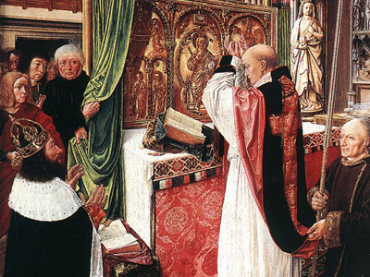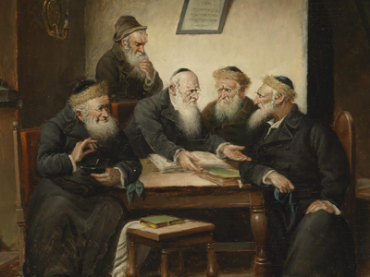Religion
Neo-Assyrian Prophecy and the Hebrew Bible
Nahum, Habakkuk, and Zephaniah
By Russell Mack
ISBN: 978-1-4632-0077-0
Previous generations of scholars believed that prophecy was unique to ancient Israel. However, recent archaeological discoveries reveal that numerous societies in the ancient Near East practiced prophecy. This study examines the similarities and differences between Neo-Assyrian and biblical prophecy, particularly focusing on the 7th c. BCE prophets Nahum, Habakkuk, and Zephaniah, and discusses what implications these differences may have for our understanding of these prophets.
$183.00
The Religious Condition of Holland
By Anonymous
Series: Analecta Gorgiana 714
ISBN: 978-1-61143-006-6
The author outlines religious practices and history of Protestant Churches in Holland. Most attention is paid to the Reformed Church of Holland, but other Churches are discussed. The influence of politics and important figureheads is described.
$34.00
A General View of the Progress of Ethical Philosophy
By Anonymous
Series: Analecta Gorgiana 715
ISBN: 978-1-61143-007-3
The author reviews a volume on ethics, concluding it to be insufficient. Any logical system of ethics and morals must derive from the Bible. The author criticizes the volume’s author for his sympathetic treatment of David Hume.
$34.00
Recent Discussions of Totemism
By Crawford Toy
Series: Analecta Gorgiana 721
ISBN: 978-1-61143-015-8
The meaning of the words “totem” and “totemism” have not been consented as of yet. However, totemism has been designated as an exogamous organization in which a clan is allied by an intimate and sacred bond to a natural object.
$34.00
The Elephant and Its Ivory in Ancient China
By Carl Bishop
Series: Analecta Gorgiana 725
ISBN: 978-1-61143-019-6
This paper’s purpose is to present a brief synopsis of the available data concerning the Asiatic elephant and the traffic in its ivory during the earlier historical periods in regions where it has now disappeared, particularly in ancient China.
$34.00
The Tearing of Garments as a Symbol of Mourning
With Especial Reference to the Customs of the Ancient Hebrews
Series: Analecta Gorgiana 726
ISBN: 978-1-61143-020-2
The tearing of garments and putting on sackcloth are common acts mentioned together in the Hebrew Bible. The author argues that these customs exhibit a tendency in religious observances to revert to the ways of an earlier time.
$34.00
Die Handschiften des jakobitischen Markusklosters in Jerusalem
By Anton Baumstark; With the Assistance of Georg Graf
Series: Kiraz Historical Catalogues Archive 16
ISBN: 978-1-61143-024-0
This work is a catalogue of 38 Arabic and Syriac manuscripts found in the Syrian Orthodox Monastery of St. Mark in Jerusalem; contains liturgical and literary works.
$151.00
Saint Michael the Archangel
Three Enconiums by Theodosius, Archbishop of Alexandria; Severus, Patriarch of Antioch; and Eustathius, Bishop of Trake: the Coptic Texts with Extracts from Arabic and Ethiopian Versions
Edited and Translated by E. A. Wallis Budge
ISBN: 978-1-61143-102-5
This work consists of three different encomia of the Archangel Michael, each dealing with a different miracle.
$206.00
The Stag-Messenger Episode
By M. B. Ogle
Series: Analecta Gorgiana 765
ISBN: 978-1-61143-143-8
This article by M.B. Ogle is a demonstration of how the theory that the stag-messenger episode of Medieval literature is Celtic in origin has erred, and proposes it was of oriental provenance.
$37.00
The Constitutional Development of the Western Han Dynasty
By Telly Koo
Series: Analecta Gorgiana 769
ISBN: 978-1-61143-147-6
The Western Han dynasty was one of the most successful period in Chinese history. They drastically transformed the government from the ways of the Chou monarchs, which was the basis for subsequent dynasties.
$36.00
The Dates of the Philosophical Sutras of the Brahmans
Series: Analecta Gorgiana 772
ISBN: 978-1-61143-150-6
The author is concerned with finding the dates of composition of the Buddhist doctrines the Sunyavada and the Vijnanavada. It was concluded that the Vijnanavada was arranged later than the Sunyavada.
$37.00
The Mystery of Fu-lin
Series: Analecta Gorgiana 773
ISBN: 978-1-61143-151-3
Several Chinese literary accounts attest that the mysterious country in the west called Fu-lin is declared to be identical with the country from ancient times known as Ta-ts’in. The author does not believe that they are one in the same.
$38.00
On the Avesta
Or the Sacred Scriptures of the Zoroastrian Religion
Series: Analecta Gorgiana 775
ISBN: 978-1-61143-153-7
An ancient and authoritative record of the Iranian religion, the Avesta, had recently been discovered. The author’s goal is to trace out the history of the introduction to modern knowledge of the writings of this text.
$41.00
The Fountain of Youth
Series: Analecta Gorgiana 776
ISBN: 978-1-61143-154-4
Every region around the world has a version of the Fountain of Youth myth. The author is concerned as to the origin of the story. He concludes that India is the source of the fable.
$46.00
A brief sketch of an Argument respecting the nature of Scriptural, and the importance and necessity
By Anonymous
Series: Analecta Gorgiana 778
ISBN: 978-1-61143-156-8
The author advocates spiritual revivals. He describes the proper revival and says why America in particular stands to benefit from more revivals. He also warns of the negative consequences if there are too few revivals.
$34.00
A Short Narrative of the Extraordinary Work of Grace at Cambuslang in Scotland; in a Letter to a Fri
With Proper Attestations. Reprinted from the Edition of 1742
Series: Analecta Gorgiana 779
ISBN: 978-1-61143-157-5
This article introduces and reprints a letter relating the extraordinary conversion of a large number of sinners in Cambuslang, Scotland. Following are a series of attestations to the truth of the account by various Scottish ministers.
$36.00
An address delivered before the Alumni Association of Nassau Hall, on the date of the Annual Commenc
By Anonymous
Series: Analecta Gorgiana 780
ISBN: 978-1-61143-158-2
The article comments on and reprints passages from a commencement speech for the Alumni Association of Nassau Hall. In the address, John Sergeant discusses why not many students are inadequately prepared for college work.
$34.00
The Sinner’s Ability to obey God, if he will
Two Sermons by Rev. Mr. Perkins, Montreal, Canada. National Preacher, September, 1833. J.& J. Harper, New York.
By Anonymous
Series: Analecta Gorgiana 782
ISBN: 978-1-61143-160-5
The article reviews two sermons on the freedom of sinners to obey God. The author declares that man can obey so long as he is able, stating the reverend’s point is obvious and flawed.
$35.00
Tholuck’s Interpretation of the Sermon on the Mount
By Anonymous
Series: Analecta Gorgiana 783
ISBN: 978-1-61143-161-2
The article reviews a commentary on the Sermon on the Mount. The reviewer examines the conclusions reached by the author as well as the method used to come to those conclusions. He approves of the author’s unique philosophical approach.
$34.00
Bodily Affections produced by Religious Excitement
By Anonymous
Series: Analecta Gorgiana 784
ISBN: 978-1-61143-162-9
The article is a response to an unprinted letter concerning involuntary body movement during moments of religious frenzy. The editor relates personal experience from 1800 to 1803 and ultimately discourages this behavior.
$34.00
The Life of the Rev. Rowland Hill, A. M.
By the Rev. Edwin Sidney, A. M. London, (printed.) New York, (reprinted,) 1834. 12mo.
By Anonymous
Series: Analecta Gorgiana 785
ISBN: 978-1-61143-163-6
The review reviews the life of Rev. Rowland Hill based on his published biography. Included is the minutia of his preaching career. Though a review, the article comments little on the text, more or less paraphrasing it.
$36.00
The Case of the Dissenters in a Letter Addressed to the Lord Chancellor
By Anonymous
Series: Analecta Gorgiana 786
ISBN: 978-1-61143-164-3
The article is a letter concerning the treatment of Dissenters in England. The writer objects to the nationalized Episcopacy for various injustices upon Dissenters. He asks for separation of church and state.
$36.00
Brief Memoir of the late Rezeau Brown, A. M.
By Anonymous
Series: Analecta Gorgiana 787
ISBN: 978-1-61143-165-0
The article presents the life of the late Rezeau Brown, a young man with religious aspirations and a poor constitution. The memoir relates the details of his studies and his dedication to missionary work.
$38.00
Memoir of Roger Williams, the Founder of the State of Rhode Island
By James D. Knowles, Professor of Pastoral Duties in the Newton Theological Institution. Boston: Lincoln, Edmands & Co. 1834. 12mo.
By Anonymous
Series: Analecta Gorgiana 788
ISBN: 978-1-61143-166-7
This article reviews a memoir of Roger Williams, founder of Rhode Island. The reviewer presents Williams’ biography, the founding of Providence and the creation of Rhode Island. Much attention is paid to the politics of its founding.
$36.00
Cornelius Jansenius; and the Controversies on Grace, in the Roman Catholic Church
By Anonymous
Series: Analecta Gorgiana 789
ISBN: 978-1-61143-167-4
The author provides the biography of Cornelius Jansenius and describes his commentary, Augustinus, to explain Jansenius’s position on Grace in relation to Catholic doctrine. He concludes this history convicts the Catholic Church.
$35.00
Filter by
Filter by price
Filter by manufacturer



























